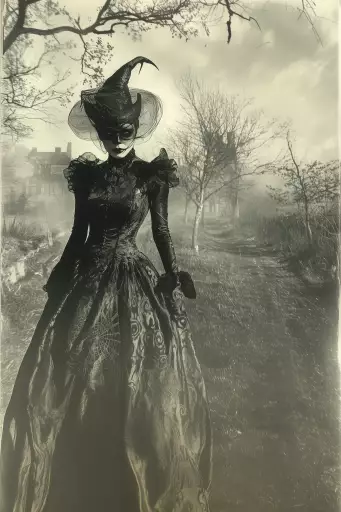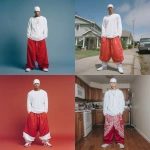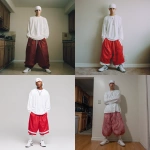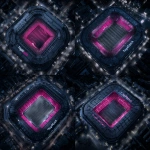Explore the Best AI Image Gallery

Blockchain in Finance: Unlocking Creativity and Innovation
The finance sector is undergoing a radical transformation, driven by the disruptive power of blockchain technology. While often associated with cryptocurrencies, blockchains potential extends far beyond digital currencies, reaching into diverse sectors like art, music, and design. This transformative technology offers new avenues for creative expression, collaboration, and monetization, reshaping the very fabric of the creative industry.
Potential Uses in the Creative Industry
- Digital Art and NFTs: Blockchain enables the creation and ownership of unique digital artworks as non-fungible tokens (NFTs). Artists can directly sell their work to collectors, bypassing traditional intermediaries and retaining a larger share of profits. This empowers artists and fosters a new ecosystem for digital art trading.
- Music Distribution and Royalties: Blockchain simplifies music distribution and royalty payments. Musicians can directly upload their music to blockchain-based platforms, connect with fans, and receive transparent and timely royalties for each stream or sale. This cuts out record label middlemen and empowers artists to control their own work.
- Collaborative Creation: Blockchain facilitates collaborative creation in art, design, and other creative fields. Multiple contributors can contribute to a project on the blockchain, with each contribution recorded and rewarded transparently. This fosters a more inclusive and participatory creative process.
- Copyright Protection: Blockchain provides a secure and immutable record of ownership for creative works. By registering their work on the blockchain, creators can establish clear proof of authorship and prevent unauthorized copying or distribution. This strengthens intellectual property rights and protects artistic creations.
Ethical Considerations
While blockchain offers immense potential for the creative industry, it also raises important ethical considerations:
- Digital Divide: Access to blockchain technology and its benefits may not be equitable, potentially widening the digital divide between creators with resources and those without. Its crucial to ensure inclusive access and bridge this gap.
- Data Privacy and Security: Blockchain transactions are often publicly viewable, raising concerns about data privacy for creators and their audiences. Implementing robust security measures and exploring privacy-enhancing technologies is essential.
- Algorithmic Bias: Smart contracts and algorithms used in blockchain applications can perpetuate existing biases if not carefully designed and monitored. Its vital to ensure fairness and mitigate potential harm caused by algorithmic discrimination.
Future Trends
The intersection of blockchain and the creative industry is still evolving rapidly. Here are some key trends to watch:
- Metaverse Integration: Blockchain-based metaverse platforms will offer new opportunities for immersive creative experiences, virtual exhibitions, and interactive art installations.
- Decentralized Creative Marketplaces: Peer-to-peer platforms powered by blockchain will empower creators to connect directly with buyers, fostering a more decentralized and transparent marketplace.
- AI-Powered Creativity: AI algorithms integrated with blockchain can assist in creative processes, generate new content, and personalize artistic experiences.
Blockchain technology holds immense promise for the creative industry, empowering artists, fostering innovation, and redefining how we create, consume, and interact with art. By embracing its potential while addressing ethical considerations, we can unlock a future where creativity flourishes in a more inclusive and transparent digital world.






](https://images.ai-img.art/thumbnails/150/69d81ae5ecde297f3c11da78435c5fc00fbac7b00e2c7ccd89d7bbeb014e0541.webp)


](https://images.ai-img.art/thumbnails/150/908bcb9950a44fd4b37d1a84cf00178988cea9507738d7ad4f92707c692461ef.webp)





](https://images.ai-img.art/thumbnails/150/05b3252b3f681226a3df9027b069db31c005f91b72257a74367c4102f03a2ba0.webp)






](https://images.ai-img.art/thumbnails/150/807ac97f95d56e8cc7cf714e13299d80bf6bcb5b4d80b77a7f06f30246184943.webp)







](https://images.ai-img.art/thumbnails/150/57afc09cc38edf73880f760b7ebe1852c5522c6b4051836717b2e56b6f7f913c.webp)





](https://images.ai-img.art/thumbnails/150/fc468fe14407b96489933a55227127071fd5f6c0505be74ca4dcb2f1e2fa3771.webp)



](https://images.ai-img.art/thumbnails/150/3ccc82ef0ad0cc1ab1dfb5b8e6bc37924fcad45dadf41cbd1cb21d19fc7f640a.webp)

](https://images.ai-img.art/thumbnails/150/83ec831b9fb19e0db5a520b051b9556f3f594b87acc957ffee094a06a565e6f0.webp)


](https://images.ai-img.art/thumbnails/150/738b292720ee21b57673dfb75ad851f4c34d16f5006ae3027ba685feaddb6b04.webp)
